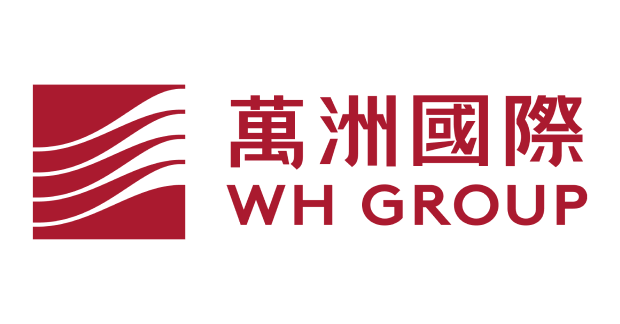Market Size of asia-pacific red meat Industry
|
|
Study Period | 2017 - 2029 |
|
|
Market Size (2024) | USD 497.16 Billion |
|
|
Market Size (2029) | USD 543.59 Billion |
|
|
Largest Share by Type | Pork |
|
|
CAGR (2024 - 2029) | 1.80 % |
|
|
Largest Share by Country | China |
Major Players |
||

|
||
|
*Disclaimer: Major Players sorted in no particular order |
APAC Red Meat Market Analysis
The Asia-Pacific Red Meat Market size is estimated at 497.16 billion USD in 2024, and is expected to reach 543.59 billion USD by 2029, growing at a CAGR of 1.80% during the forecast period (2024-2029).
497.16 Billion
Market Size in 2024 (USD)
543.59 Billion
Market Size in 2029 (USD)
1.90 %
CAGR (2017-2023)
1.80 %
CAGR (2024-2029)
Largest Segment by Type
53.10 %
value share, Pork, 2023
Pork has become the primary protein choice in the region, and it emerged as the default meat type in the base year due to its popularity and changing consumer preferences.
Largest Segment by Country
54.41 %
value share, China, 2023
The abundant availability and growing population are the major factors driving the demand for meat products in China, making it the largest meat-consuming country.
Fastest-growing Segment by Type
2.11 %
Projected CAGR, Pork, 2024-2029
The rising incomes, growing population, and increasing urbanization are the major factors contributing to the growth in pork production and consumption in the region.
Fastest-growing Segment by Country
2.15 %
Projected CAGR, Malaysia, 2024-2029
Consumer preference for meat in Malaysia is much higher than in any other country in the region. The lifestyle of the Malaysian population is impacting meat consumption.
Leading Market Player
2.07 %
market share, WH Group Limited, 2022

The extensive brand recognition and wider product portfolio under a wide brand range ensure the safety of the products offered by the company, making it the market leader.
Advancements in pork production and declining poultry prices are fueling the demand
- The Asia-Pacific red meat market was majorly led by pork meat throughout the study period. It is also anticipated to be the fastest-growing meat type during the forecast period (2023-2029), registering a CAGR of 2.88% by value. This is mainly supported by its growing production rate. It was the most-produced meat type in the region, accounting for a share of 46.8% by value in 2021, and it is anticipated to continue being the highest-produced meat type during the forecast period. As of 2022, China led the global pork production, which was estimated to produce over 50 million metric tons of meat, followed by Vietnam, the second-largest pork meat producer in Asia-Pacific and the seventh-largest globally.
- As of 2022, the second-largest market share by value was occupied by beef, which registered a growth in market sales value by 3.88% from 2017 to 2022, mostly because it was priced less than mutton and pork, making it an affordable addition to people's diets. Beef is the second most widely consumed red meat in Asia, with per capita consumption highest in South Korea, followed by Vietnam. China, Japan, and South Korea import the most beef in Asia. The imports are expected to increase to meet demand unless domestic production is revamped for the better.
- Mutton is the third-largest variety of red meat consumed in the region, with the sales value reaching 4.49% during 2017-2022. For all Asian countries, it has been observed that mutton is costlier than beef, which could have acted as a restraint. However, owing to larger disposable incomes and growing middle-class incomes in South Asian countries, the purchasing power of consumers is expected to increase, thereby implying opportunities for a demand hike for mutton.
Rising working population and increasing household income driving the market
- The red meat market in Asia-Pacific experienced significant growth during the historical period, growing at a value rate of 5.3% from 2020 to 2022. The most consumed meat type in the region is pork, followed by beef and mutton. Across Asia, pork is the primary protein in many cuisines. Most pork consumed in the region is domestically produced, while imports contribute to a sizable portion. China is one of the largest producers and consumers of pork in the world, producing 53.97 million metric tons of pork in 2022. However, production is expected to decline in the next two years, as a devastating outbreak of African swine fever (ASF) can hamper the country's pork supply.
- The Malaysian red meat market is anticipated to witness the fastest growth among the countries in the region, and it is projected to register a CAGR value of 2.19% during the forecast period (2023-2029). The growth will be driven by the development of the processed red meat segment in the country, as the number of employed people grew to 16.16 million in 2022, growing by 29,000 from the 2021 number. The meat supply chain consists of establishments for slaughtering animals, cutting, processing, packaging, and distributing meat for consumption or sale.
- Pork is the fastest-growing meat segment in the region, and it is projected to register a CAGR of 2.12% from 2023 to 2029. The growing household income continues to be a key driver of rising pork consumption. As customers' options for food expand with the rising disposable incomes, the demand for meat is anticipated to increase in developing countries. The per capita consumption of pork meat increased to 15.76 kg per capita in 2022, with the highest consumption in all meat types, as domestic production is increasing.
Asia-Pacific Red Meat Industry Segmentation APAC Red Meat Industry Segmentation
Beef, Mutton, Pork are covered as segments by Type. Canned, Fresh / Chilled, Frozen, Processed are covered as segments by Form. Off-Trade, On-Trade are covered as segments by Distribution Channel. Australia, China, India, Indonesia, Japan, Malaysia, South Korea are covered as segments by Country.
- The Asia-Pacific red meat market was majorly led by pork meat throughout the study period. It is also anticipated to be the fastest-growing meat type during the forecast period (2023-2029), registering a CAGR of 2.88% by value. This is mainly supported by its growing production rate. It was the most-produced meat type in the region, accounting for a share of 46.8% by value in 2021, and it is anticipated to continue being the highest-produced meat type during the forecast period. As of 2022, China led the global pork production, which was estimated to produce over 50 million metric tons of meat, followed by Vietnam, the second-largest pork meat producer in Asia-Pacific and the seventh-largest globally.
- As of 2022, the second-largest market share by value was occupied by beef, which registered a growth in market sales value by 3.88% from 2017 to 2022, mostly because it was priced less than mutton and pork, making it an affordable addition to people's diets. Beef is the second most widely consumed red meat in Asia, with per capita consumption highest in South Korea, followed by Vietnam. China, Japan, and South Korea import the most beef in Asia. The imports are expected to increase to meet demand unless domestic production is revamped for the better.
- Mutton is the third-largest variety of red meat consumed in the region, with the sales value reaching 4.49% during 2017-2022. For all Asian countries, it has been observed that mutton is costlier than beef, which could have acted as a restraint. However, owing to larger disposable incomes and growing middle-class incomes in South Asian countries, the purchasing power of consumers is expected to increase, thereby implying opportunities for a demand hike for mutton.
| Type | |
| Beef | |
| Mutton | |
| Pork | |
| Other Meat |
| Form | |
| Canned | |
| Fresh / Chilled | |
| Frozen | |
| Processed |
| Distribution Channel | ||||||
| ||||||
| On-Trade |
| Country | |
| Australia | |
| China | |
| India | |
| Indonesia | |
| Japan | |
| Malaysia | |
| South Korea | |
| Rest of Asia-Pacific |
Asia-Pacific Red Meat Market Size Summary
The Asia-Pacific red meat market is experiencing a steady growth trajectory, driven primarily by the demand for pork, which remains the most consumed and produced meat in the region. The market is characterized by a diverse range of red meat products, with pork leading due to its widespread acceptance and production efficiency. Beef follows as the second most popular red meat, benefiting from its affordability compared to mutton, which is the third-largest consumed variety. The region's beef market is bolstered by significant imports, particularly from China, Japan, and South Korea, to meet the rising demand. The market dynamics are influenced by factors such as changing consumer preferences, economic growth, and the development of processed meat segments, particularly in countries like Malaysia.
The market landscape is fragmented, with major players like Cargill Inc., COFCO Corporation, NH Foods Ltd, Tyson Foods Inc., and WH Group Limited holding a modest share. These companies are actively expanding their operations to capitalize on the growing demand for red meat in the region. The Asia-Pacific red meat market is also impacted by geopolitical conditions, supply chain challenges, and fluctuating prices, particularly for beef. Despite these challenges, the market is poised for growth, supported by increasing household incomes and a rising middle class, which are expected to drive higher consumption of red meat, including pork and mutton, in the coming years.
Asia-Pacific Red Meat Market Size - Table of Contents
-
1. MARKET SEGMENTATION (includes market size in Value in USD, Forecasts up to 2029 and analysis of growth prospects)
-
1.1 Type
-
1.1.1 Beef
-
1.1.2 Mutton
-
1.1.3 Pork
-
1.1.4 Other Meat
-
-
1.2 Form
-
1.2.1 Canned
-
1.2.2 Fresh / Chilled
-
1.2.3 Frozen
-
1.2.4 Processed
-
-
1.3 Distribution Channel
-
1.3.1 Off-Trade
-
1.3.1.1 Convenience Stores
-
1.3.1.2 Online Channel
-
1.3.1.3 Supermarkets and Hypermarkets
-
1.3.1.4 Others
-
-
1.3.2 On-Trade
-
-
1.4 Country
-
1.4.1 Australia
-
1.4.2 China
-
1.4.3 India
-
1.4.4 Indonesia
-
1.4.5 Japan
-
1.4.6 Malaysia
-
1.4.7 South Korea
-
1.4.8 Rest of Asia-Pacific
-
-
Asia-Pacific Red Meat Market Size FAQs
How big is the Asia-Pacific Red Meat Market?
The Asia-Pacific Red Meat Market size is expected to reach USD 497.16 billion in 2024 and grow at a CAGR of 1.80% to reach USD 543.59 billion by 2029.
What is the current Asia-Pacific Red Meat Market size?
In 2024, the Asia-Pacific Red Meat Market size is expected to reach USD 497.16 billion.

